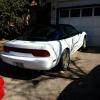Pfc Map Sharing
Announcements
-
Similar Content
-
Latest Posts
-
I much prefer that to an actual oil pressure issue, never would of thought it would of been a volt drop issue but SAU brains win again. Guess ill be turning down the oil pressure limit for the track and hunting some grounds. Ill hopefully update this thread with some high oil pressure and solid ecu voltage logs.
-
By Murray_Calavera · Posted
You've just discovered a really good reason to tell yourself, yes, I do need to buy an aftermarket ECU. Put the MAF in the bin. Slap in the new ECU and have a think about what turbo sounds you prefer. Do you want a 90's style BOV wooosh? Do you want a hektik tsututututu? Mate, can't go wrong. Just gotta get that ECU and the world is your oyster. -
Hi. Iam just curisou about this topic. I saw this video. It is about Greddy Type FV2. I know that BoVs are about that sound but how and when to use it? I read some topic here and from what i have understand on stock RB with MAF there will be some "problems" if you use this BoV? It vents the air in to the atmosphere and the MAF on stock car needs this air back in to the intake and not out? Or is it wrong? If so...i saw you can put some adaptor to circule air back...but does that not "loose" that sound? I saw another BoV from Turbosmart and it has two "exhaust" like ports? One is for the stock tubing for letting air back and one is for "sound" and let the air in the atmosphere? Can someone please explain? This is the Greddy one: And this is the Turbosmart. THANK YOU!! EDIT: So i read about this topic some more and i if i understand that correctly: That Greddy can function either like BoV or 100% Bypass valve? And that Turbosmart is what they called hybrid so you can adjust what and how many air can be vented out or back in? Is this right? THX!
-
By Dose Pipe Sutututu · Posted
That dirty voltage drop is the culprit I suspect -
i cant get them all in 1 screenshot unfortunately as i just dont know how to move things around tbh, but they are all from the same log and the line crosses at the same point for all of them
-






Recommended Posts
Create an account or sign in to comment
You need to be a member in order to leave a comment
Create an account
Sign up for a new account in our community. It's easy!
Register a new accountSign in
Already have an account? Sign in here.
Sign In Now